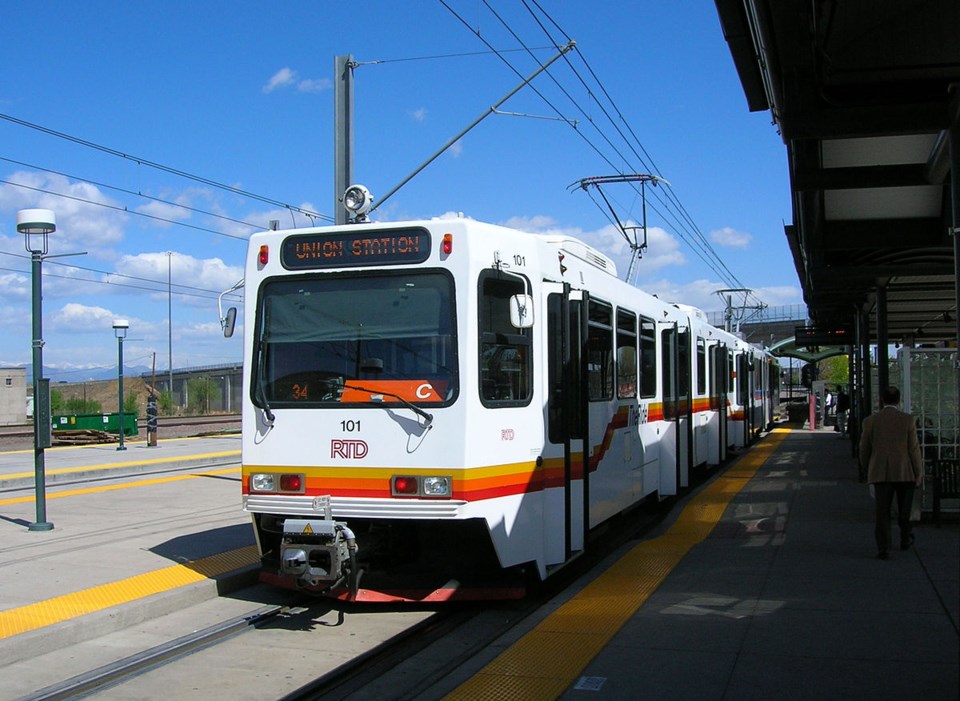Over $60 million later and Longmont is no closer to having passenger rail in the city, at least not by the hand of the Regional Transportation District.
RTD officials, including Longmont’s new representative on the district’s board of directors, said Monday night the city’s status within the FasTracks plan is not going to change anytime soon.
RTD is already struggling with plummeting ridership, a $140 million deficit and the urgent need to stabilize its existing services, said Erik Davidson, who in October was appointed by Boulder County commissioners to fill the board seat for District I, which includes much of Longmont.
“No one single action is going to correct this,” Davidson told city council Monday during a briefing about RTD’s short- and long-term goals. “We have to focus to make sure we get through what is going to be a difficult time.”
Davidson, a Broomfield resident and engineer, said he knows residents are frustrated with RTD and unfulfilled promises to bring passenger rail to Boulder County.
“I am keenly aware we are in a district with an unfinished corridor,” Davidson told council.
Councilmember Marcia Martin told Davidson — as well as RTD’s new CEO and General Manager Debra Johnson — that the district’s short-term fiscal woes shouldn’t derail long-promised plans to extend rail to Longmont.
“How do you make us whole?” Martin asked RTD officials.
Longmont was slated to be part of RTD’s Northwest Rail project, a segment in the FasTracks expansion program, for which voters approved a 0.4% tax in 2004. But unforeseen costs and other miscues have pushed the anticipated completion date of the rail line to 2050.
“There were some significant financial misses in terms of cost projections” for the Northwest Rail, Davidson told council, including the cost of securing a right-of-way from the BNSF Railway.
RTD last year drew fire from city council and other entities in the northwest corridor when the district’s board considered taking $120 million from a fund set aside for the Northwest Rail line to help address the district’s then-$166 million budget deficit. The RTD board decided to leave the fund intact.
Through 2019, the total Longmont portion of the RTD tax for FasTracks is $60,299,232, Jim Golden, Longmont’s chief financial officer, said in an email.
To date, the only FasTracks spending slated for Longmont is $17 million for the First and Main transit station. The available balance for the project is $16.2 million, said Tony Chacon, redevelopment/urban renewal manager for Longmont.
“We are not sure where the other $800,000 has been spent as RTD has not given the city an accounting of the expenditures,” Chacon said in an email.
The project in the long term is intended to serve as a station for rail and a Park-n-Ride lot to be used in the interim. The city also is working with RTD on a plan to consolidate bus service at the location, according to an executive summary of the project.
Plans call for the station to be completed in 2025.
Davidson said Longmont may pin its passenger rail hopes on a proposal from the Front Range Passenger Rail Commission for a 191-mile- long-passenger rail system between Fort Collins and Pueblo. The trains would make stops in Longmont.
Amtrak, the nationwide passenger rail service, would largely pay for the rail service, which would cost $1.5 billion to $2.5 billion. Amtrak is embarking on a national $25 billion modernization program to develop shorter passenger rail routes and Colorado’s Front Range is considered a top prospect for some of Amtrak’s funding, RTD officials told city council.
“If we find the right partners we can find a way to look at these types of options” and build a system that is sustainable, Davidson told council. “Because what we have right now is untenable.”



